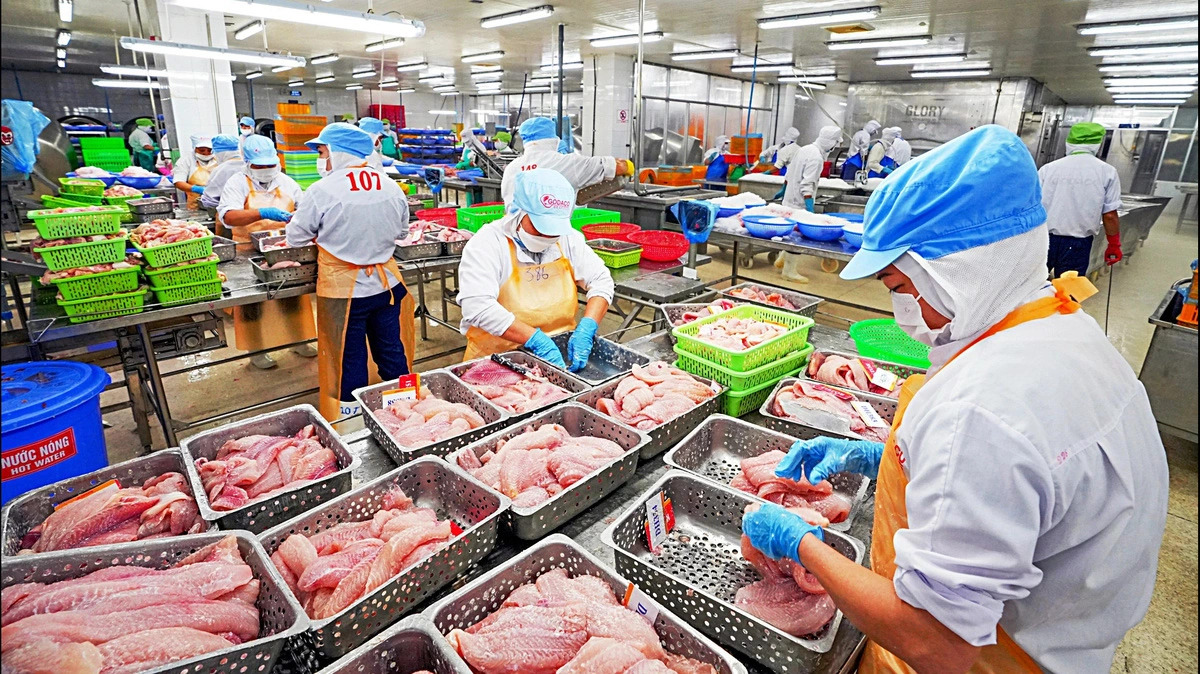Vietnam has set a target of eight-percent GDP growth in 2025 and Standard Chartered has positive perspectives on its economic growth, but the country may face domestic and external challenges in the year, experts from the bank said at a media briefing in Ho Chi Minh City on Thursday.
At the Global and Vietnam Outlook 2025 event, which focused on economic trends and growth opportunities, Tim Leelahaphan, senior economist for Vietnam and Thailand at Standard Chartered Bank, reported the bank's forecast about Vietnam’s GDP growth this year, which is 6.7 percent, with 7.5 percent in the first half of the year and 6.1 percent in the second half.
He attributed this growth to continued business expansion and strong foreign investment, which remain key drivers of Vietnam’s economy.
“We are positive about Vietnam's economy in the medium and long term, but we have to acknowledge that this year presents some risks, both domestically and internationally. That is why we expect a growth rate of 6.7 percent for 2025, which, while lower than Vietnam’s official target, remains the highest projected economic growth in the ASEAN region,” Leelahaphan said.
Although Standard Chartered’s projection is below the Vietnamese government’s target, it still places Vietnam as the fastest-growing economy among ASEAN countries based on the bank’s estimates.
In the first half of the year, Vietnam’s economy is expected to continue its recovery from last year. However, the second half of the year will bring uncertainties as new details on U.S. trade policies are expected to emerge.
These policies could involve tariffs on products like steel and aluminum, as well as potential duties on other products, probably automobiles, semiconductors, and pharmaceuticals.
It will be also clearer if Vietnam could remain exempt from these tariffs or, ultimately, would be taxed by the U.S. administration.
With many unknowns ahead, the global trade environment may not be favorable in the second half of the year, creating additional challenges for Vietnam’s export-driven economy.
Leelahaphan identified four major risks Vietnam may face this year: inflation, the global trade environment, currency volatility, and potential interest rate hikes.
Inflation started to rise in January, and while the government is still aiming for eight-percent GDP growth in 2025, stronger economic activity could push inflation higher throughout the year.
According to Nguyen Thuy Hanh, CEO and head of banking and coverage at Standard Chartered Vietnam, if inflation rises by 4.5 percent, certain sectors of the economy may benefit as long as wages increase accordingly. She expressed confidence that the government would take appropriate measures to support businesses, economic entities, and consumers if inflation becomes a concern.
Regarding the potential for interest rate hikes, Leelahaphan noted that while many central banks are cutting rates, Vietnam’s interest rates have been relatively low for some times. With inflation trending higher and pressure on the Vietnamese dong, the State Bank of Vietnam may consider raising rates, which could affect borrowing costs for businesses and consumers.
|
|
| Nguyen Thuy Hanh (C), CEO and head of banking and coverage at Standard Chartered Vietnam; Edward Lee (L), chief economist for ASEAN and South Asia at Standard Chartered Bank; and Tim Leelahaphan, senior economist for Vietnam and Thailand at Standard Chartered Bank, at the media briefing in Ho Chi Minh City on February 20, 2025. Photo: Thanh Ha / Tuoi Tre News |
Despite these challenges, Vietnam’s economic growth is expected to be supported by several key factors, including strong foreign direct investment (FDI), robust retail sales, industrial production, export growth, and a recovering tourism sector.
Leelahaphan highlighted that manufacturing continues to attract the highest levels of FDI, followed by the property sector.
US tariff policy will not impact Vietnam significantly
U.S. President Donald Trump’s recent 25-percent tariff on all steel and aluminum imports is not expected to have a significant impact on Vietnam’s exports, as these products are not key components of the Southeast Asian country’s trade with the U.S., according to Leelahaphan.
Speaking about U.S. tariffs on China, Leelahaphan noted that during the 2018-19 trade war, businesses sought to bypass tariffs by shifting investments to Vietnam through FDI. This trend could create new opportunities for Vietnam.
However, he cautioned that bilateral or reciprocal tariffs could become a concern as Vietnam has a significant trade surplus with the U.S., which may put the country under closer scrutiny by U.S. trade officials.
Despite this, Vietnam has maintained a strong diplomatic and economic relationship with the U.S., which Leelahaphan said is a positive sign but still unpredictable.
U.S. trade policies are expected to remain in place for the next four years, and local enterprises should closely monitor market volatility and expand into new markets to reduce risk.
Hanh, CEO of Standard Chartered Vietnam, shared this perspective, emphasizing that Vietnamese exporters have improved productivity and operational efficiency while expanding into new markets following the COVID-19 pandemic.
She advised businesses to carefully manage operating costs and stay ahead of trends in digitization and automation to remain competitive.
She also highlighted Vietnam’s resilience as one of ASEAN’s most dynamic economies, saying, "Vietnam has consistently posted high growth rates, even in the face of periodic challenges, transforming into a thriving upper middle-income economy."
Meanwhile, Edward Lee, chief economist for ASEAN and South Asia at Standard Chartered Bank, noted that global growth is expected to slow slightly, from 3.2 percent to 3.1 percent in 2025.
He added that while inflation is easing, expectations for Federal Reserve interest rate cuts have been lowered, and tight monetary conditions, fiscal pressures, and geopolitical uncertainties may continue to impact global markets.
Like us on Facebook or follow us on Twitter to get the latest news about Vietnam!


















































